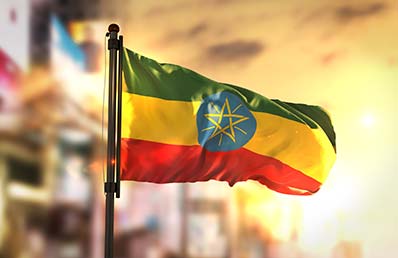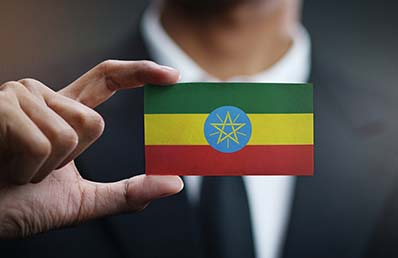Unlocking East Africa’s largest economy.
Ethiopia- the second largest African country in terms of population has a planned economy. Around 80% of Ethiopian population is still employed in the agricultural sector, but services have beaten agriculture as the principal contributor of GDP. Ethiopia has the lowest income inequality among African countries and lowest in the world with Gini coefficient comparable to that of Scandinavian nations. The economy of Ethiopia is a mixed and transition economy with a large public sector.

The state is heavily involved in the economy. Key sectors like communications, banking, and insurance, power distribution are state owned. Under Ethiopian constitution, all land is state-owned and it provides long term leases to the tenants.
Ethiopia earns its foreign exchange largely through its service sector- chiefly the government-owned Ethiopian Airlines- followed by export of agricultural commodities like coffee. Gold, sesame, khat, livestock and horticultural commodities are also major contributors. Currently manufacturing represent a meagre 8% of total exports in 2016, but it is expected to grow in the coming years due to a growing international presence.
Sectors like banking, insurance, telecommunications, and micro-credit are still restricted to domestic investments, but as of 2019 Ethiopia has attracted foreign direct investment (FDI) for roughly $8.5 billion from countries like China, Turkey, India and EU; Investments has been majorly in sectors like infrastructure, construction, agriculture/horticulture, agricultural processing, textiles, and leather products.
Ethiopia plans to increase installed power generation capacity by 8,320MW from 200MW to boost its industrial sector by building three major dams and investments in renewable energy sources.
| Year |
GDP ((in Bil. US$ PPP)) |
GDP per capita (in US$ PPP) |
GDP growth (real) |
Inflation rate (in Percent) |
Government debt (in % of GDP) |
|---|---|---|---|---|---|
| 01 | KL485B422K | Killenso Mokonisa | Dried Beans | High | 200g |
| 02 | KL485B422K | Gelana Abaya | Cherry | Low | 250g |
| 03 | KL485B422K | Tore Gelana | Dried Beans | Medium | 200g |
| 04 | KL485B422K | Killenso Mokonisa | Cherry | High | 150g |
| 05 | KL485B422K | Gelana Abaya | Dried Beans | Low | 200g |
| 06 | KL485B422K | Killenso Mokonisa | Cherry | Medium | 100g |
| 07 | KL485B422K | Killenso Mokonisa | Dried Beans | High | 150g |
| 08 | KL485B422K | Gelana Abaya | Cherry | Low | 200g |
Infrastructure
Sustaining its Positive Economic Growth by Expanding Physical Infrastructure
Over the last few years Ethiopian government have significantly improved investments to build an infrastructure that would enable better economic development.

Railways
Ethiopia is building a rail network covering 5000km to connect a landlocked Ethiopia to the world market by ensuring a seamless access to one or several ports. The primary port for Ethiopia is the port of Djibouti in Djibouti. Ninety five percent of Ethiopian trade passes through Djibouti.
Roads
Road projects account for a quarter of the annual infrastructure budget of the Ethiopian government. The Road Sector Development Program (RSDP) of the Ethiopian government aims to improve road density for Ethiopia to 35km per 1000km2, and decrease the proportion of the country area from an all-weather road from 75% to 70% .
Through this program, the government has set aside $4billion to construct, repair and upgrade roads over the next decade.
Ports and Harbours
Ethiopia relies on the port of Djibouti for nearly all its imports. Ethiopia relies on inland dry ports for cargo distribution. The main dry port of Ethiopia is Modjo dry port.
Airports
The leading airport in Ethiopia is Bole International, in Addis Ababa (HAAB). The Addis Ababa airport handles almost all of the international transportation. It is also the hub of the national carrier the Ethiopian airlines. The airline flies to destinations in Ethiopia and other countries of the African continent and to other destinations like Asia, Europe, North America and South America.


